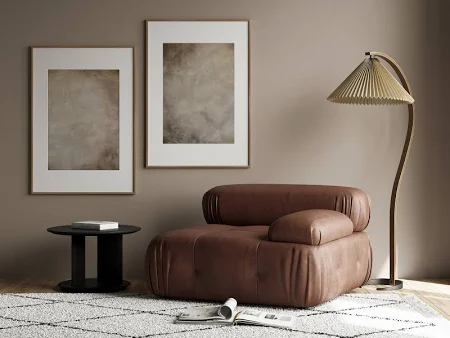
Wabi-sabi, an ancient Japanese philosophy, celebrates the beauty of imperfection, impermanence, and incompleteness. It is the art of finding beauty in the natural cycle of growth and decay, valuing the imperfect, the worn, and the humble. At Vinchy Art, this philosophy is embraced and brought to life through a range of evocative, wabi-sabi-inspired artworks that capture the essence of the fleeting and the flawed.
In this article, we delve into the concept of wabi-sabi, explore its connection to Vinchy Art, and discuss why this artistic approach resonates so strongly with contemporary audiences.
1. What is Wabi-Sabi?
Wabi-sabi is a Japanese worldview that originates from Zen Buddhism. It encourages an appreciation of the simple, the rustic, and the natural. The term is often broken into two parts:
- Wabi refers to simplicity, the beauty found in understated elegance and the appreciation of quietness or solitude.
- Sabi is the beauty that comes with age, the patina of time, and the acceptance of the natural cycle of life and decay.
Together, wabi-sabi represents an aesthetic that values natural imperfection over polished perfection. In contrast to the modern world’s obsession with perfection, wabi-sabi encourages us to accept and even embrace the transience of things.
2. The Artistic Philosophy of Vinchy Art
At Vinchy Art, the philosophy of wabi-sabi is not just an inspiration; it’s a foundation. The artworks created by Vinchy Art artists aim to evoke a sense of calm and reflection, bringing the viewer closer to the essence of natural imperfection and fleeting beauty. Every brushstroke and texture in Vinchy’s pieces tells a story of time, nature, and life’s imperfections.
a) Imperfection as a Form of Perfection
Rather than striving for flawless precision, Vinchy Art artists allow the materials and forms to guide the creative process. In this way, the imperfections of the materials—whether it be the texture of the canvas, the rough edges of clay, or the uneven surfaces of wood—become integral to the final piece. These “flaws” are celebrated, becoming key elements that define the art.
b) The Use of Natural Elements
A core aspect of wabi-sabi is the use of natural elements. In Vinchy’s works, you’ll often find materials like wood, stone, clay, and earthy tones that connect the viewer with the organic world. These materials reflect the philosophy of appreciating things as they are, untouched and unpolished.
Each artwork seeks to convey the message that nothing lasts forever, and there is beauty in watching things change over time. Whether it’s the slight erosion of a sculpture or the subtle fading of colors on a canvas, these natural changes only add to the allure of the work.
c) Minimalism and Simplicity
In line with wabi-sabi’s aesthetic principles, Vinchy Art embraces minimalism. The compositions are often simple, with a few chosen elements standing out rather than crowded, chaotic scenes. The beauty lies in what is left unsaid, what is omitted. This allows the viewer to reflect and fill in the gaps with their own interpretation.
The minimalist approach also emphasizes the transience of life—highlighting the fleeting nature of beauty, the moments that pass, and the space that surrounds us.
3. Key Features of Wabi-Sabi Artworks by Vinchy Art
a) Organic Materials and Textures
Vinchy Art’s wabi-sabi pieces often incorporate natural textures and organic forms. The surfaces of the artworks have an intentionally raw, tactile quality. Whether it’s the rough grain of a wooden sculpture or the cracked glaze of a ceramic bowl, these materials remind us of the beauty found in nature’s imperfections.
b) Subdued, Earthy Color Palette
The color palette in wabi-sabi art is typically understated, favoring earth tones, muted colors, and neutral shades. This natural and subdued palette evokes a sense of calm and tranquility, allowing the viewer to engage with the subtle complexities of the work. In Vinchy’s pieces, expect to see tones of clay, sand, ash, and stone that ground the artwork in a sense of place.
c) Handcrafted Imperfection
One of the key elements of wabi-sabi art at Vinchy Art is the focus on handcrafted techniques. The artists deliberately choose methods that highlight the hand of the maker—whether it’s through visible brushstrokes, uneven shapes, or textures that reveal the artist’s touch. This ensures that each piece is unique and carries with it the energy and intention of its creator.
The result is an artwork that feels authentic, personal, and imbued with meaning. Each piece tells its own story, revealing time’s effect on its materials and surfaces.
d) Nature and Time as Central Themes
In Vinchy Art’s wabi-sabi works, the natural world is often a central theme. From depictions of worn landscapes to abstract representations of time, the artworks invite the viewer to meditate on the passage of time and the inevitable changes that come with it.
Rust, weathering, and decay are common motifs in these pieces, reflecting the constant transformation of everything in the natural world. Rather than viewing decay as a negative, these changes are celebrated for their beauty and depth of character.
4. Applications of Wabi-Sabi Art in Modern Life
a) Interior Design
One of the reasons wabi-sabi art is becoming increasingly popular is its versatility in modern interior design. In a world that often feels overwhelming and chaotic, wabi-sabi’s focus on simplicity and natural beauty brings a sense of calm and serenity to spaces. Vinchy Art’s pieces are often featured in minimalist and contemporary homes, adding depth and texture to otherwise clean, modern interiors.
These artworks are perfect for creating a peaceful atmosphere in spaces such as living rooms, bedrooms, and even office spaces where reflection and tranquility are valued.
b) Mindfulness and Meditation
Incorporating wabi-sabi art into spaces intended for meditation or mindfulness practices can enhance the sense of presence and reflection. The art’s focus on impermanence and natural beauty encourages viewers to live in the moment and accept life’s imperfections.
Vinchy Art’s pieces, with their tactile surfaces and organic forms, help to ground individuals in the present, making them ideal for spaces dedicated to relaxation and contemplation.
5. Why Choose Vinchy Art for Wabi-Sabi Artworks?
At Vinchy Art, we are committed to creating pieces that resonate with the essence of wabi-sabi. Here’s why you should choose us for your wabi-sabi-inspired art:
- Authenticity: Our artists fully embrace the wabi-sabi philosophy, creating works that reflect the natural beauty of imperfection.
- Handcrafted Quality: Each piece is carefully crafted by hand, ensuring that no two artworks are exactly alike.
- Simplicity and Depth: Our works embody simplicity while offering a profound sense of meaning, encouraging viewers to reflect on the passage of time and the beauty of the natural world.
- Timeless Appeal: Wabi-sabi art is timeless in its appeal, offering something that will remain relevant and beautiful for years to come.
Conclusion
Wabi-sabi art by Vinchy Art offers a refreshing break from the quest for perfection that dominates the modern world. It invites viewers to appreciate the beauty found in imperfection, the natural world, and the passage of time. Through the use of organic materials, subdued colors, and handcrafted techniques, each piece tells a unique story and brings a sense of calm and reflection to any space.




